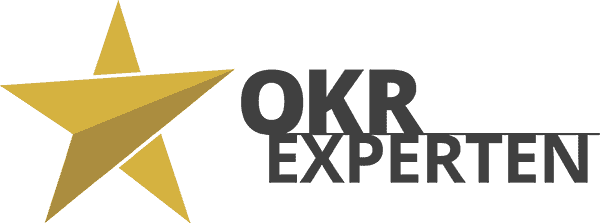
05 May Why does my company need OKR?
Why does my company need OKR?
Often the first question we are asked by potential customers who have no previous experience of OKR is: “Why does my company need OKR?”.
It sounds like another employee performance management system or that they already get all their KPI values from their business intelligence systems. And why should they invest their time in a new methodology and a new software tool?
The answer is: you often don’t know what you don’t know. There’s a great chapter in a recent McKinsey Fast Times book called “Do you know what great looks like?”. From line production to cell production. From the waterfall method to agile product development. Now we are talking about iterative business processing. This is what OKR enables you to do: iterative business strategies that can be realized quickly.
In this article, we would like to present five challenges that OKR can help your company with.
Challenge 1: Focus
Ambitious targets are common in business. There are many challenges ahead of you. You have many things to do at any given time, so you know that being focused is one of the biggest challenges. What needs to be done first? What’s next? If you don’t put the really important tasks first, the upcoming tasks may no longer be important or necessary.
From a business point of view, it is essential to set priorities. What are my three or five goals that I want to achieve this year? How do I want to get closer to these goals quarter by quarter?
“People think focus means saying yes to the thing you need to focus on. But that’s not what it means at all. Rather, it means saying no to the hundred other good ideas that are out there. You have to choose carefully.”
– Steve Jobs
It is therefore extremely important to choose exactly which battles you really want to fight. When your priorities are clear, the paths become clear. If the paths are clear, you make faster progress. This in turn will get you to your destination faster.
Challenge 2: Alignment
If the problem of focus is already so pronounced at the individual level, imagine how pronounced it can be at the overall organizational level if you don’t have a common focus. The CEO may have set some clear goals from his point of view, but if the level below is not focused on the same things, it can lead to big problems. If the next level is 70% in line with these goals and spends the rest of their time and budget on other things, then you have a clear problem with resource allocation and will end up not knowing what the overall goals of the company actually are.
Day-to-day business consists of tasks and routines that keep your company running. However, it is often no longer possible to say whether they support the overall objective. You experiment with different tools and methods to become successful. Although this is appropriate in uncertain situations, you still feel a lack of focus and responsibility.
In organizations, for example, you sometimes see how the right hand doesn’t know what the left hand is doing. When there is a lack of alignment at the higher levels of the organization, this is usually exacerbated, especially as you move down the organizational hierarchy. This is comparable to launching a rocket: You should be absolutely sure of the launch angle. Even if it deviates by only one degree, the trajectory is later far from the desired one.
In addition, employees often tend to focus only on their own goals without understanding and working in line with the vision and goals of your company. The vision of an organization often gets lost along the way as employees and managers focus solely on their daily workload and tend to just get things done.
With insufficient alignment, it is difficult to measure the impact of your strategic decisions on the operational aspects of your business.
Challenge 3: Commitment
However, lack of commitment and initiative are often problems in the workplace, but this may not be entirely the employees’ fault. In an environment where they are told exactly what to do, they usually lack commitment. The situation is different if you are encouraged to find your own approaches, ways and means. In most cases, this is a mindshare problem. Will they make an effort and get things done or will they just wait to be told what to do now and what to do next? This is known as the IKEA effect and is a topic that has been written about extensively.
Challenge 4: Tracking
If you don’t track your progress properly, you won’t even realize that you’re running in a hamster wheel and pretty much stay in the same place despite your efforts.
The key to improving every aspect of your business is a process that:
- knows which KPIs to measure in order to know the functionality of this area of the company
- knows how these KPIs can be tracked and measured periodically
- sets improvement targets for these KPIs
- track progress towards these goals
It seems simple, but as with any seemingly big problem in a company, there are usually simple solutions. When you have people who feel like they’re running in a hamster wheel, you know you have a tracking problem.
Challenge 5: Stretching
Which of the following statements is most applicable to your organization?
- My organization appreciates it when a person commits to completing 3 tasks and actually completes 4 tasks, resulting in a 133% completion rate.
- My organization values it when a person commits to completing 10 tasks (comparable to those in #1) and actually completes 7, resulting in a 70% completion rate.
If you answered yes to the first question, then you may have a problem that you didn’t even know existed. This effect is known as the “sandbag effect” and is fairly widespread. Such target-setting systems are particularly important when it comes to external commitments – customers or investors.
Within the company, however, the sandbag system will create a number of comfort zones for employees and thus lead to a waste of manpower. The worst part is that you don’t even realize it. Many business leaders don’t know what they don’t know. In this vacuum, leaders will tend to set their expectations too low or focus on the wrong elements of a transformation.
Summary
So when and managers ask the key question on this topic: Why does my company need OKR?
Let’s realize that the answer is right in front of you. As we have outlined in this article, every company usually faces one or more challenges. One can perhaps argue that there are other ways to tackle some of these challenges. And sure, yes, OKR is not the only horse in the stable. There are also other methods that can offer you solutions for individual or a group of these challenges. But OKR as a methodology comprehensively addresses all of these 5 challenges and offers a systematic solution to these problems. In addition, the OKR methodology has a large following. So you can get both trained staff or short-term consulting help to get your OKR program started.
We, the OKR experts, will be happy to advise you!
Courtesy Profit.co






